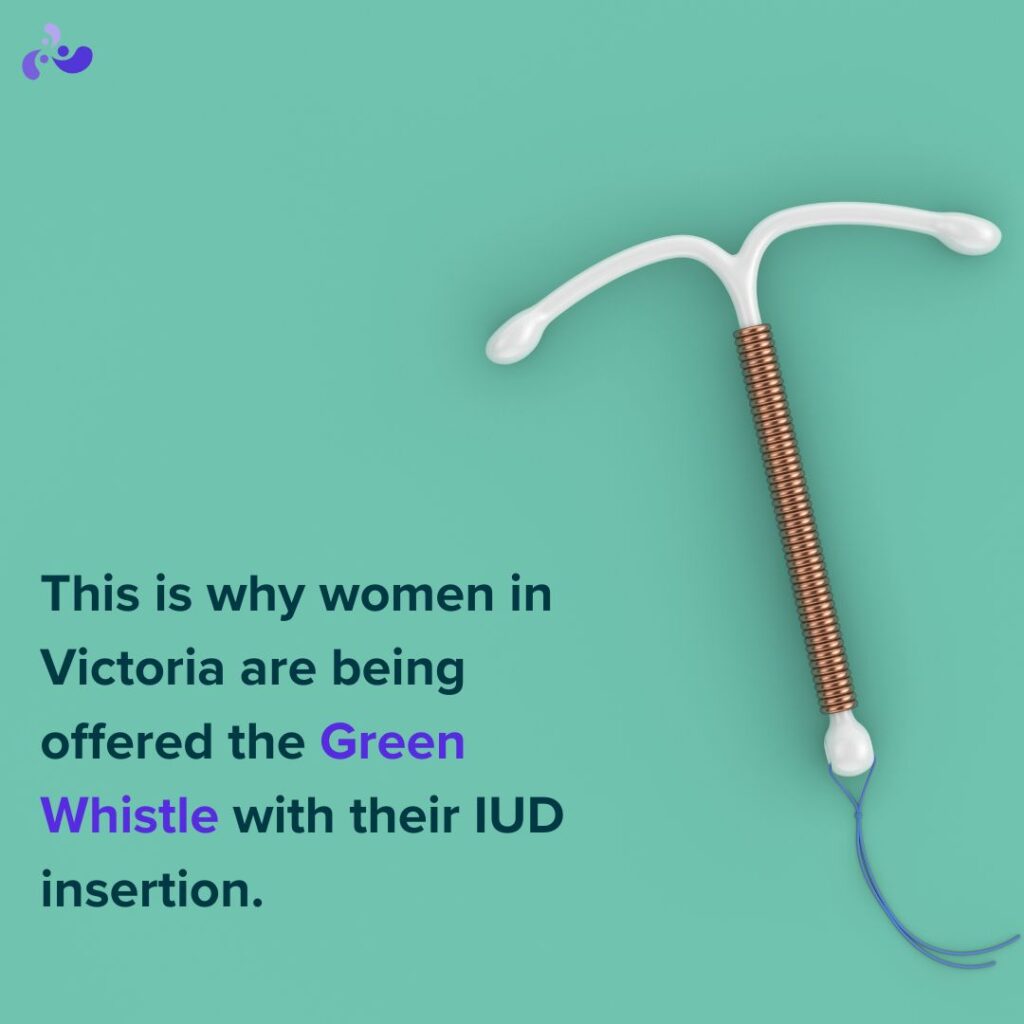The green whistle, a type of fast-acting pain relief usually seen in ambulances and emergency rooms, will soon be offered to women in Victoria having an intrauterine device (IUD) procedure.
The Victorian Government has announced that Penthrox will be made available during IUD insertions at 20 Women’s Sexual and Reproductive Health Hubs across the state.
The move comes after the Inquiry into Women’s Pain revealed the extent of the gender pain gap including widespread reports of severe pain during IUD insertions and consistently inadequate pain relief being offered to women and girls.
IUDs are one of the most effective long-acting forms of contraception. In NSW, women are advised to take Ibuprofen an hour before the procedure, but no additional pain relief is routinely offered.
One woman told the inquiry: “I experienced significant pain during the IUD insertion process. I was instructed to take Ibuprofen, but was offered no further pain relief despite having a difficult and prolonged insertion experience. I strongly support the use of the green whistle for people undertaking this procedure.”
The Illawarra Women’s Health Centre offers long-lasting reversible contraceptives, like IUDs, for free.
Executive Director, Sally Stevenson, said the NSW government can learn a lot from Victoria’s approach to pain management.
“Victoria has shown what is possible when women’s pain is taken seriously. Their response is grounded in evidence, transparency and lived experience, and, crucially, it delivers practical change,” she said.
“Providing effective pain relief for IUD insertions is a simple, humane reform that recognises women’s comfort and dignity. We would welcome similar leadership here in NSW.”
The Victorian Inquiry into Women’s Pain received responses from more than 13,000 women and gender-diverse people.
The findings were clear: women’s pain is routinely dismissed, under-treated and misdiagnosed, often for years. Conditions such as endometriosis, chronic pelvic pain and autoimmune disorders frequently go unrecognised, while women are told their symptoms are “normal” or psychological.
The report outlines a series of system-wide recommendations to close the gender pain gap.
The report outlines system-wide recommendations to close the gender pain gap, including mandatory clinician training, clearer diagnostic pathways, increased research funding, and embedding women with lived experience in service design.
Ms Stevenson said NSW should adopt Victoria’s evidence-based, systemic approach, rather than observe from the sidelines.
“The survey’s findings are a blueprint for reform. Women need better pain assessment, faster access to specialist care, and health professionals trained to understand the conditions that disproportionately affect women,” she said.
“Victoria has started that work. NSW now has the evidence and the opportunity to do the same.”

